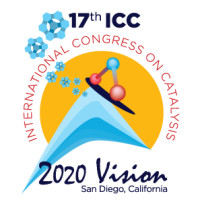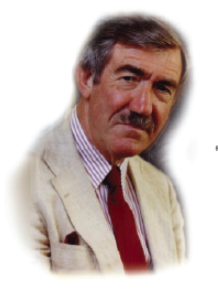
60 Year ICC Anniversary: Historical Figures of Catalysis
Attendance list from the first North American Meeting
Michel Boudart: The Science of Catalysis
After graduation, Michel remained at Princeton University until 1961, first at the Forrestal Research Center as a research associate (1950–1953) and assistant to John B. Fenn, the director of Project SQUID (1953–1954), then in the Department of Chemical Engineering as Assistant Professor (1954–1958) and Associate Professor (1958–1961) and where he quickly established a reputation as one of the brightest young “stars” in the discipline. After a three-year stay at the University of California at Berkeley as Professor of Chemical Engineering, he became Professor of Chemical Engineering and Chemistry at Stanford University in the Department of Chemical Engineering, which he helped lead to a position of international prominence and chaired from 1975 until 1978. He was the Keck Professor of Engineering from 1980 to 1994, and Keck Professor of Engineering, Emeritus from then until his passing on May 2, 2012.
His honors include: Belgian American Educational Foundation Fellowship, 1948; Procter Fellowship, 1949; Curtis McGraw Research Award of the American Society for Engineering Education, 1962; the R.H. Wilhelm Award in Chemical Reaction Engineering of the American Institute of Chemical Engineers, 1974; the 1977 Kendall Award and the 1985 Murphree Award, both of the American Chemical Society; the 1991 Chemical Pioneer Award of the American Institute of Chemists; and the International Precious Metals Institute 1994 Tanaka Distinguished Achievement Award. The Symposium “Advances in Catalytic Chemistry III” (May 1985, Salt Lake City, Utah) was organized in his honor, as was the Catalysis Symposium of the 68th ACS Colloid and Surface Science Symposium (June 1994, Stanford University). The Catalysis Society selected him as the 1986 Ciapetta Lecturer. Michel was elected to the National Academy of Sciences in 1975, to the National Academy of Engineering in 1979, to the American Academy of Arts and Sciences in 1991, to the Legion D’Honneur in France and to three Academies in his native Belgium where he and his wife Marina were also honored as Knights of the Crown. He also received several honorary degrees, served on several editorial boards, and, in recognition of Michel Boudart’s broad global influence, the North American Catalysis Society and the European Federation of Catalysis Societies joined hands and in 2006 established the Michel Boudart Award for the Advancement of Catalysis in recognition of the truly international impact of his achievements and guidance in this field.
Boudart’s textbook, Kinetics of Chemical Processes (1968), has been translated into Japanese, Spanish, and French, and was published again (1991) in the Butterworth-Heineman Series of Chemical Engineering Reprints. He is also the author of Kinetics of Heterogeneous Catalytic Reactions (with G. Djéga-Mariadassou), Princeton University Press, 1984, originally published as Cinétique des réactions en catalyse hétérogene (Masson, Paris, 1982). Together, these two books represent a legacy that continues to define the field. He was also co-editor (with J.R. Anderson) of Catalysis: Science and Technology, Volumes 1–9 (Springer-Verlag). He published more than 250 journal articles and held four US patents.
Michel established his potential for leadership right from the beginning. During his graduate studies, he recognized the catalytic consequences of the electronic properties of solids and, a mere few months after they were reported, brought Linus Pauling’s concepts of the d‑character of metals into the study of catalysis. Later, he combined these concepts with knowledge emerging from theory and surface science to propose a classification of reactions based on their sensitivity to surface structure, measured in practice from the effects of the size and composition of metal clusters on the rates of chemical reactions. Such pioneering breakthroughs required that he lead his research group through the development of protocols for counting the numbers of exposed metal atoms using molecular titrants, and for assessing the structure of such atoms using spectroscopic methods very soon after they became available. He pioneered the use of Mössbauer, infrared, and X‑ray absorption spectroscopies in heterogeneous catalysis, and established the use of emerging formalisms of irreversible thermodynamics in the mechanistic assessment of catalytic sequences. Michel Boudart was also interested in industrial developments and how catalysis can help solve major societal problems. In 1974, Boudart co-founded the company Catalytica.
Michel’s intense focus on the properties of surfaces at the atomic scale and on the mechanism of molecular transformations, through the prism of bond-making and bond-breaking elementary events, was always ahead of the times. He served as the beacon that led the evolution of catalysis from its roots in phenomenological industrial practice into a science grounded in the chemistry and physics of the synthesis and the structural and functional characterization of catalytic solids. The birth and growth of this discipline into a mature science owes its intellectual nutrients to the remarkable insights, keen eye for relevance and elegance, and excellent taste in research topics that characterized Michel and his career over five decades.
Michel’s constant quest for understanding made him a natural steward of the field. His curiosity, his own success, and his close reading of the literature allowed him to bring sharp focus to the research frontier and to champion all who were pushing it forward. When asked about his greatest achievement, however, Michel was firm and consistent in his response – his students and their own achievements. For example, late in his career he posed the following question: “Why is an academic career so desirable.” His answer: “Because of the students!” The scientific and critical approaches he imprinted into those whom he mentored, and the role model that he provided for them as a person and as a scholar, represent his most enduring legacies — his ripple in time — and his recognized claim to an academic tree that continues to advance the field of catalysis and which extends over many generations and throughout the world. His advice to students and postdocs setting out on their careers was “do not lament what you don’t know, make the most of what you do know” still rings true today, provided that making the most of what you do know includes, as Michel’s career exemplifies, continuous extension of what you know and vigorous application and protection of the highest level of scientific rigor.
Contributed by W. Nicholas Delgass, James A. Dumesic, Enrique Iglesia, Fabio Ribeiro and Henrik Topsøe on March 22, 2013.
Video Interview of Donald Nace
Video Interview of John Turkevich
Video Interview of Haldor Topsøe
Interview of nonagenarian Dr. Haldor Topsøe, founder of Haldor Topsøe A/S Catalyst Company, by Professor Burt Davis during the June 2005 NAM meeting in Philadelphia, PA
Video Interview of Edward Teller
Video Interview of Ricardo Levy
Video Interview of Robert Garten
